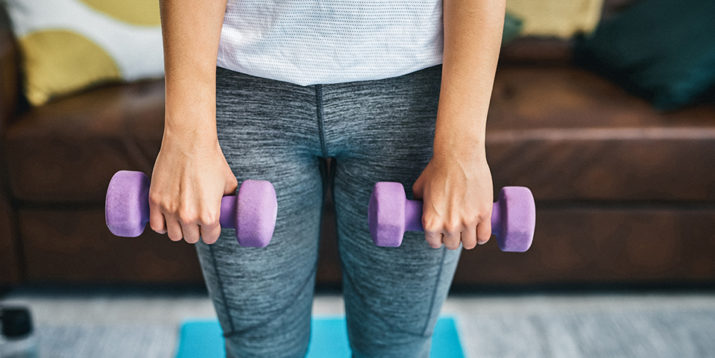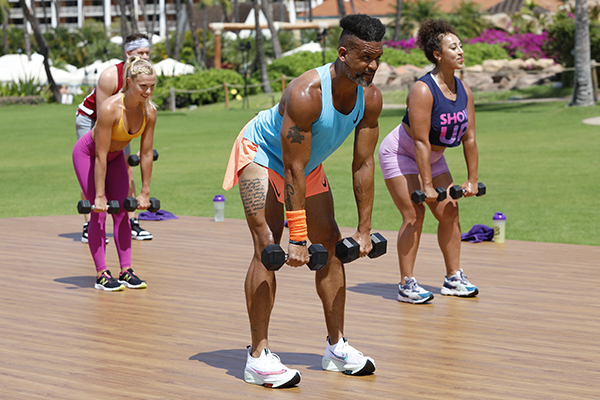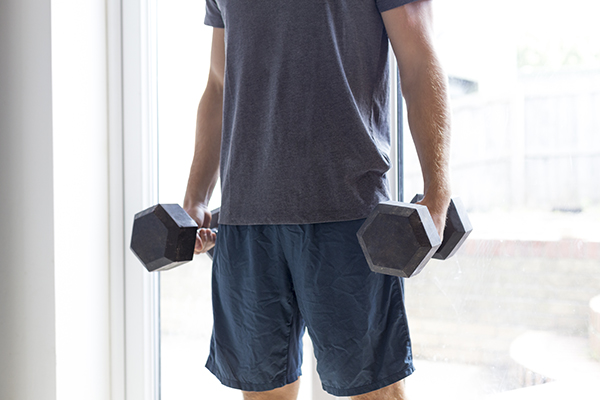Resistance Training: What to Know and How to Get Started

Resistance training — you’ve heard the term and maybe even gotten advice to take it up. So what is resistance training? And what differentiates it from cardio, yoga, and other forms of exercise?
What Is Resistance Training?

Also known as “strength training,” resistance training is a form of exercise designed to improve your muscles’ strength, size, power, and endurance.
“Resistance training means using force to overcome some kind of load,” says sports performance coach Cody Braun, C.S.C.S. “That resistance can take the form of a dumbbell, a machine, an exercise band, or even your body weight,” he explains.
A push-up is a classic example of a resistance training exercise using your own body weight. As you push your body upwards, your chest, shoulder, and triceps muscles must overcome the force of gravity pushing you down toward the floor.
Similarly, in the dumbbell curl — a resistance training move using a hand weight — your biceps contract to draw your forearm toward your upper arm, overcoming the gravity that’s pulling the dumbbell downward.
Over weeks and months, your muscles become incrementally stronger as they adapt to the stress of pushing and pulling against more and more resistance. It’s important that you keep pace with these changes by lifting heavier weights or stretching thicker, more challenging resistance bands, a process know as progressive overload.
“The most common mistake I see in the gym is not progressively adding more weight in order to get stronger,” says Braun. “Your muscles grow when they are asked to do more than they are capable of — within reason. You have to challenge your muscles if you want them to adapt and grow stronger,” he adds.
There are many different examples of resistance training, depending on your goals:
- In sports like powerlifting and Olympic weightlifting, the goal is to lift a barbell with as much weight as you can in various explosive movements.
- In bodybuilding, you lift weights to achieve a dramatically muscular and lean appearance.
- In sports-specific training, the goal is to prepare the body to execute the movements specific to a particular sport.
- In recreational lifting, the goal is to feel healthy and look your best.
All of these approaches involve resistance training.
How to Do Resistance Training at Home

Now that we’ve answered the question, “What is resistance training?” it’s time to take action. However, not everyone likes the gym. Luckily, no one needs the gym to get in fantastic shape.
Working out at home, you can go a long way with nothing more than a mat and some space to move around.
The many variations of squats, lunges, push-ups, planks, leg raises and other bodyweight moves will keep you challenged for a long time — and they require no equipment at all.
For variety and additional challenge, you may want to invest in a pair of dumbbells (ideally adjustable ones), a resistance band or two, a medicine ball, and possibly a suspension trainer.
These implements will open up a world of new moves — and help you push your fitness that much higher.
Whether or not you have the equipment, start off with one or two sets of 15-20 repetitions of each move, completing each rep with perfect form.
Over time you can build up to three or four sets of 8-12 repetitions, using heavier weights or more resistance.
Pro tip: Many BODi programs, like LET’S GET UP!, 9 Week Control Freak, 6 Weeks of THE WORK, and Morning Meltdown 100, include resistance-training workouts.
Not sure which program is for you? Use this guide to help you choose.
Basic Resistance Training Moves
There are all kinds of innovations designed to enhance resistance training, but you can target most of the major muscle groups with three fundamental bodyweight movements.
Push-up
Instructions:
- Get on all fours with your feet together, your body straight from head to heels, and your hands in line with (but slightly wider than) your shoulders. Clench your glutes and brace your core to lock your body into position.
- Keeping your elbows tucked toward your body and your head down, lower your torso until your chest is within a few inches of the floor.
- Pause, and then push yourself back up to the starting position as quickly as possible.
Squat
Instructions:
- Stand with your feet between hip and shoulder width apart, toes pointed forward (slightly pointed out is OK too), arms extended in front of you.
- Keeping your chest up, gaze forward, feet flat, and your lower back in its natural arch, bend at your hips and knees until your thighs are parallel to the floor. Your knees should be tracking in line with the middle of your feet.
- Pause, and return to the starting position.
Pull-up
Instructions:
- Grab a pull-up bar with an overhand grip that’s slightly wider than shoulder-width, and hang at arm’s length (a position known as a dead hang).
- Keeping your back straight and core tight, pull yourself upward until at least your chin clears the bar.
- Pause, and then lower yourself back to a dead hang.
3 Benefits of Resistance Training
Resistance training’s list of benefits is exhaustive, but there are several key ways in which it can improve your health and daily life.
1. Everyday tasks are easier
Whether it’s hoisting luggage into the overhead bin or carrying a toddler through Walmart, resistance training helps you strain less to perform common physical feats.
2. Stronger bones
Not unlike muscle, bones grow and shrink along with movement or inactivity. Resistance training places pressure on bones, which respond by growing thicker and denser.
3. Improved body composition
Resistance training offers the twofold advantage of helping build muscle and burn fat. Depending on how far you take it, the result could be a superhero physique or simply fitting into a pair of old jeans.
Can You Lose Weight With Resistance Training?

Not only can you lose weight with resistance training, but it’s also an absolutely indispensable tool in your quest to lose weight.
For long-term, effective and healthy weight control, you want to maintain — and ideally build — muscle mass while losing fat.
Muscle tissue is metabolically “expensive” — it burns calories even at rest. The more of it you have, the easier it is to burn body fat and stay lean in the long term.
So when you’re trying to lose weight, it makes sense to try to hold onto as much muscle mass as possible while simultaneously burning as much fat as you can.
A carefully planned weight-loss diet — in which you consume fewer calories than you burn — ensures that your scale weight will go down, as your body has to use its own tissues for fuel.
But left to its own devices, only about half of that fuel will come from fat store. The other half comes from your muscle tissue.
What’s the fix? You guessed it: resistance training.
By challenging your muscles to move increasingly heavy weights, you signal your body to hold onto its muscle mass and burn fat preferentially, resulting in a newly svelte — and muscular — physique.
